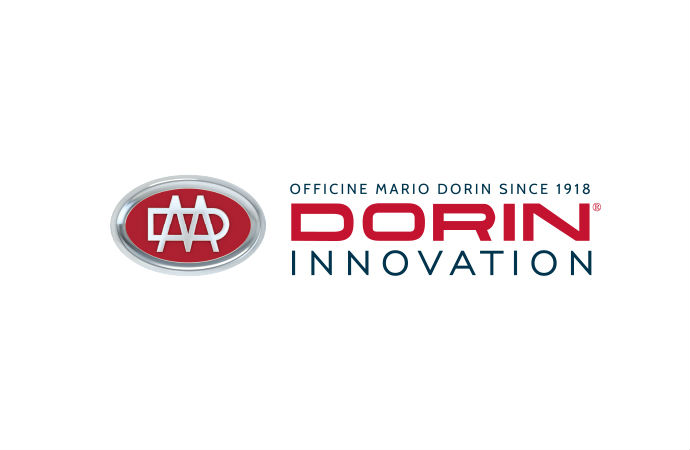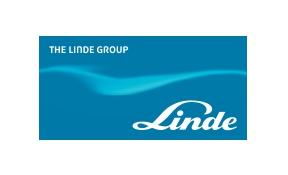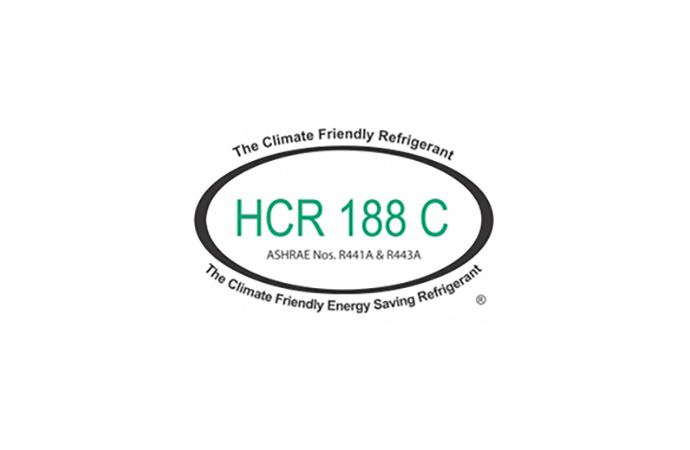Under an IEA Heat Pump Programme collaborative project, a 2.9kW propane water-to-water heat pump prototype for space heating and domestic hot water has been developed, lab tested and field trialed in a low energy house in the South of Norway. Under the same project, simulations of heat pump refrigerant cycles in Austria showed that the highest seasonal performance factor could be expected with R290 as the refrigerant.

The IEA Heat Pump Programme’s collaborative project on “Economical Heating and Cooling Systems for Low Energy Houses” has now been completed and final reports have been published. National projects in Norway and Austria explored the use of hydrocarbon refrigerant propane in heat pump systems.
Norway: design and components of the R290 prototype
The 2.9kW propane water-to-water heat pump prototype was developed at the Norwegian University of Science and Technology in co-operation with SINTEF Energy Research. The system was designed to cater for space heating (connected to a floor heating system), domestic hot water (DHW) production, or to work in a simultaneous mode by desuperheating.
The prototype contained a propane charge of 250g, and has been built to comply with safety requirements set out in standard EN 378:2008. The design incorporated:
The main components for the integrated heat pump unit were available in the required capacity range from leading manufacturers and included:
Norway: Laboratory testing of the R290 prototype
The prototype heat pump system was tested in the laboratory at the Norwegian University of Science and Technology (NTNU).
The calculated Carnot efficiency for the prototype ranged from about 0.30-0.40 and 0.45-0.50 when including and excluding the heat exchanger losses, respectively. Since the performance of the compressor, condenser, desuperheater and suction gas heat exchanger were in the same order of magnitude as previous values from simulations, the researchers concluded that the main reason for the relatively low COP and low Carnot efficiency was the poor performance of the evaporator and unstable superheat control for the expansion valve.
Norway: field testing the R290 prototype – significant energy savings
The prototype water-to-water propane heat pump system has been installed in a pilot low energy house in Southern Norway, with a total floor area of 172 m2 and an estimated total energy demand of about 89 kWh/(m2year). The heat source for the prototype heat pump is lake water with a temperature that normally fluctuates between 5 and 15°C during the year.
The heat pump was monitored for 2.5 years from September 2007 to April 2010. The average seasonal performance factor (SPF) during the entire measuring period was 3.7 when taking into account only the energy to drive the compressor, while the SPF amounted to 3.1 when the total energy input to both the compressor and the pumps was considered. The SPF values correspond to about 70% energy savings compared to an electric heating system.
It is notable that during the entire measuring period the DHW heating demand represented just 37% of the total heating demand, a rather low fraction for a low energy house, that typically has low energy needs for space heating. However, the specific pilot house might not have matched the profile of a typical low energy house, as the residence was a relatively large house (172 m2) with only two residents.
In periods with higher hot water demand (eg summer and Christmas), SPF values and corresponding energy savings increased: in these periods SPF values (including the total energy input to the compressor and pumps) ranged from about 3.8 to 4.2, corresponding to about 74-76% energy savings compared to an electric heating system.
Austrian simulation results: 3.6 SPF for an R290 heat pump cycle
The national Austrian project at the Institute of Thermal Engineering (IWT) of Graz University of Technology (TU Graz) was dedicated to the development of an integrated heat pump in the capacity range of 3-5 kW, preferentially using a natural refrigerant.
As first step, three system layouts for further investigations were defined, including a reverse operating air-to-air heat pump with air-heating/-cooling, a brine-to-water heat pump with a hydraulic space heating/cooling system and a reverse operating brine-to-water heat pump with hydraulic space heating/cooling. All three concepts were analysed by means of simulations of the refrigerant cycle and a choice was made for the second system layout – a brine-to-water heat pump with a hydraulic space heating/cooling system.
Concerning the refrigerant choice for the system, simulations of the refrigerant cycles with different refrigerants (R134a, R290, R744) showed that the highest seasonal performance factor (SPF) could be expected with R290 refrigerant (SPF=3.6). However, given the flammability of propane and the relatively strict safety regulations according to EN 378 (2008), the researchers did not select R290 for their further investigations and construction of a prototype.
About the IEA Heat Pump Programme
The IEA Heat Pump Programme is a non-profit organisation under which participants in different countries cooperate in projects in the field of heat pumps and related heat pumping technologies such as air conditioning, refrigeration and working fluids (refrigerants).
The projects within the IEA Heat Pump Programme are known as Annexes. Annex 32 gives the framework for international research on heat pump systems for space heating and cooling in low energy houses. The 10 countries participating in Annex 32 included Austria, Canada, France, Germany, Japan, Netherlands, Norway, Sweden, Switzerland and USA.
Norway: design and components of the R290 prototype
The 2.9kW propane water-to-water heat pump prototype was developed at the Norwegian University of Science and Technology in co-operation with SINTEF Energy Research. The system was designed to cater for space heating (connected to a floor heating system), domestic hot water (DHW) production, or to work in a simultaneous mode by desuperheating.
The prototype contained a propane charge of 250g, and has been built to comply with safety requirements set out in standard EN 378:2008. The design incorporated:
- Indirect, closed system design for the heat pump unit with indirect closed water loops for heat rejection to the high-temperature DHW storage tank and the floor heating system
- Only soldered joints for the heat pump unit inside the cabinet, no flare couplings
- Ex-proof low-pressure and high-pressure controllers
- Gas-tight cabinet for the electrical equipment
- Installation of the heat pump unit in a gas-tight cabinet which is vented to the ambient and equipped with a leak detector - visual alarm
The main components for the integrated heat pump unit were available in the required capacity range from leading manufacturers and included:
- Compressor – Danfoss SC15CNX, single-stage, hermetic piston, 2900 rpm, 15.28 cm3
- Evaporator – SWEP brazed PHE B15-10, 0.36 m2, height/width 6.5
- Condenser – SWEP brazed PHE B15-10, 0.36 m2, height/width 6.5
- Desuperheater – SWEP brazed PHE B8-10, 0.23 m2, height/width 4.3
- Suction gas heat exchanger – SWEP brazed PHE, B5-10, 0,12 m2, height/width 2.6
- Expansion valve – Danfoss TUA R22, thermostatic with internal pressure equalisation
Norway: Laboratory testing of the R290 prototype
The prototype heat pump system was tested in the laboratory at the Norwegian University of Science and Technology (NTNU).
The calculated Carnot efficiency for the prototype ranged from about 0.30-0.40 and 0.45-0.50 when including and excluding the heat exchanger losses, respectively. Since the performance of the compressor, condenser, desuperheater and suction gas heat exchanger were in the same order of magnitude as previous values from simulations, the researchers concluded that the main reason for the relatively low COP and low Carnot efficiency was the poor performance of the evaporator and unstable superheat control for the expansion valve.
Norway: field testing the R290 prototype – significant energy savings
The prototype water-to-water propane heat pump system has been installed in a pilot low energy house in Southern Norway, with a total floor area of 172 m2 and an estimated total energy demand of about 89 kWh/(m2year). The heat source for the prototype heat pump is lake water with a temperature that normally fluctuates between 5 and 15°C during the year.
The heat pump was monitored for 2.5 years from September 2007 to April 2010. The average seasonal performance factor (SPF) during the entire measuring period was 3.7 when taking into account only the energy to drive the compressor, while the SPF amounted to 3.1 when the total energy input to both the compressor and the pumps was considered. The SPF values correspond to about 70% energy savings compared to an electric heating system.
It is notable that during the entire measuring period the DHW heating demand represented just 37% of the total heating demand, a rather low fraction for a low energy house, that typically has low energy needs for space heating. However, the specific pilot house might not have matched the profile of a typical low energy house, as the residence was a relatively large house (172 m2) with only two residents.
In periods with higher hot water demand (eg summer and Christmas), SPF values and corresponding energy savings increased: in these periods SPF values (including the total energy input to the compressor and pumps) ranged from about 3.8 to 4.2, corresponding to about 74-76% energy savings compared to an electric heating system.
Austrian simulation results: 3.6 SPF for an R290 heat pump cycle
The national Austrian project at the Institute of Thermal Engineering (IWT) of Graz University of Technology (TU Graz) was dedicated to the development of an integrated heat pump in the capacity range of 3-5 kW, preferentially using a natural refrigerant.
As first step, three system layouts for further investigations were defined, including a reverse operating air-to-air heat pump with air-heating/-cooling, a brine-to-water heat pump with a hydraulic space heating/cooling system and a reverse operating brine-to-water heat pump with hydraulic space heating/cooling. All three concepts were analysed by means of simulations of the refrigerant cycle and a choice was made for the second system layout – a brine-to-water heat pump with a hydraulic space heating/cooling system.
Concerning the refrigerant choice for the system, simulations of the refrigerant cycles with different refrigerants (R134a, R290, R744) showed that the highest seasonal performance factor (SPF) could be expected with R290 refrigerant (SPF=3.6). However, given the flammability of propane and the relatively strict safety regulations according to EN 378 (2008), the researchers did not select R290 for their further investigations and construction of a prototype.
About the IEA Heat Pump Programme
The IEA Heat Pump Programme is a non-profit organisation under which participants in different countries cooperate in projects in the field of heat pumps and related heat pumping technologies such as air conditioning, refrigeration and working fluids (refrigerants).
The projects within the IEA Heat Pump Programme are known as Annexes. Annex 32 gives the framework for international research on heat pump systems for space heating and cooling in low energy houses. The 10 countries participating in Annex 32 included Austria, Canada, France, Germany, Japan, Netherlands, Norway, Sweden, Switzerland and USA.
MORE INFORMATION
Related stories




















